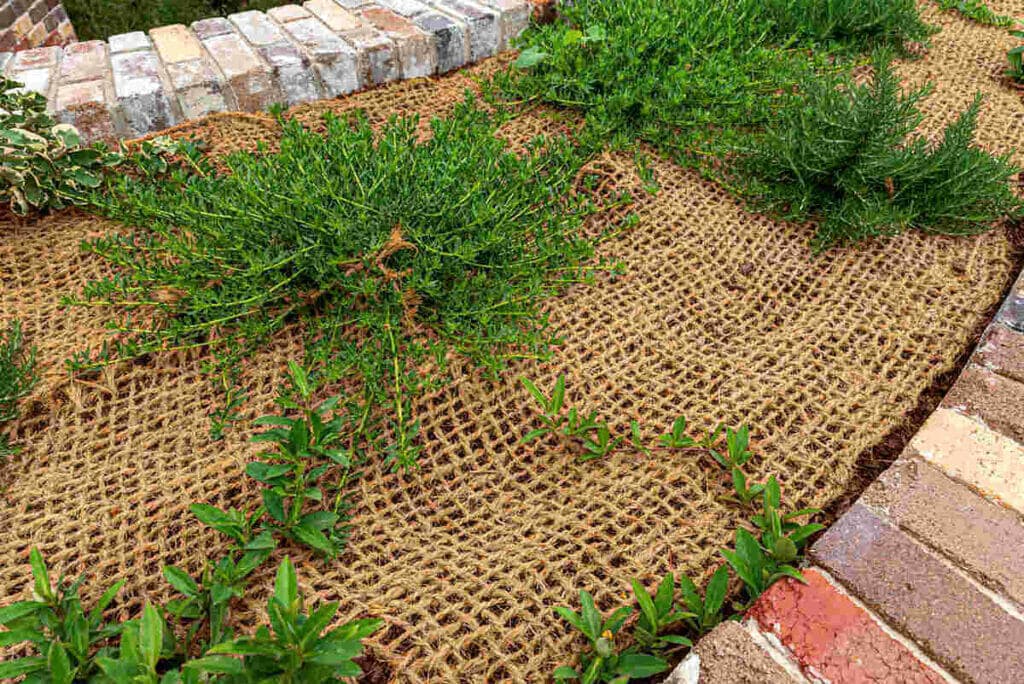In the world of landscape design, understanding and implementing key principles is essential for creating visually appealing and functional outdoor spaces.
From achieving balance and proportion to incorporating color and texture, each element plays a crucial role in the overall aesthetic and experience of a garden or yard.
This article will delve into the fundamental landscape design principles you should know, providing you with the knowledge and expertise to transform your outdoor space into a harmonious and captivating environment.
Key Takeaways
– Symmetry brings control and stability to the outdoor space.
– Proportional placement of focal points enhances the overall design.
– Strategic placement of focal points throughout the landscape enhances unity.
– Incorporating various colors and textures creates visual interest and depth.

The Importance of Balance in Landscape Design
Achieving balance is a crucial aspect of landscape design that ensures harmony and cohesion in the overall aesthetic. Symmetry plays a vital role in achieving balance in landscape design. By creating a sense of equilibrium and order, symmetry brings a feeling of control and stability to the outdoor space. Whether it is through symmetrical plantings, pathways, or structures, the use of balance through symmetry creates a visually pleasing and organized environment.
Another important element in achieving balance is the use of focal points. Focal points draw the eye and create a sense of emphasis and importance within the landscape. By strategically placing focal points such as sculptures, water features, or unique plantings, designers can create a balanced outdoor space that captures attention and provides a focal point for the viewer.
Proportion: Creating Harmonious Relationships in Your Landscape
To create a harmonious and visually appealing landscape, designers must carefully consider the proportion of elements and how they relate to one another. Proportion refers to the size and scale of different components in a landscape. Here are three important factors to consider when it comes to proportion:
1. Scale: Scale refers to the size of objects in relation to each other and the surrounding environment. It is essential to choose elements that are in proportion to the space they occupy. For example, large trees may overpower a small garden, while tiny plants may get lost in a vast open area.
2. Focal Points: Focal points are key elements that draw attention and create visual interest in a landscape. Proportional placement of focal points can enhance the overall design. Whether it’s a sculpture, a water feature, or a striking plant, these elements should be proportioned to the surrounding space to create balance and harmony.
3. Balance: Achieving balance in a landscape involves distributing elements evenly throughout the space. Proper proportion ensures that no single element overwhelms the design, creating a sense of equilibrium. It is important to consider the size, shape, and placement of each element to achieve a visually pleasing and harmonious landscape.
Unity: Bringing Coherence to Your Outdoor Space
Creating a harmonious and cohesive outdoor space involves the integration of various elements to achieve a unified design. One important aspect of achieving unity in your landscape design is through spatial arrangement. By maximizing the use of outdoor space, you can create a sense of flow and connectivity. Consider the layout of your garden, patio, or pathway to ensure that each area is purposeful and well-utilized.
Another key element in creating unity is the use of focal points. These eye-catching elements draw attention and create a focal point for the entire outdoor space. They can be anything from a striking sculpture or a beautifully designed water feature. By strategically placing focal points throughout your landscape, you can create a sense of coherence and balance.
Using Color and Texture to Enhance Your Landscape Design
Enhancing your landscape design can be achieved by incorporating various colors and textures to create visual interest and depth. By strategically using plants and flowers, you can add vibrancy and bring life to your outdoor space.
Here are three ways to utilize color and texture in your landscape design:
1. Choose a diverse range of plants and flowers: Selecting plants with different colors and textures will create a dynamic and visually appealing landscape. Consider using a mix of vibrant flowers, ornamental grasses, and foliage with varying textures to add depth and interest.
2. Use contrasting colors: Incorporate contrasting colors to create focal points and draw attention to specific areas of your landscape. For example, pairing purple flowers with yellow foliage can create a striking visual contrast.
3. Utilize different materials: Incorporate various materials such as rocks, gravel, or wooden elements to create texture in your outdoor space. This can add dimension and create a tactile experience for visitors.

Incorporating Lines and Shapes for Visual Interest in Your Garden
The incorporation of lines and shapes in your garden can greatly enhance visual interest and create a captivating outdoor space. By strategically incorporating various lines and shapes, you can create a sense of movement and structure in your garden design. Lines can be used to guide the eye, create focal points, and define different areas within your garden. Shapes, on the other hand, can add depth and dimension to your space. One effective way to create focal points with hardscape elements is through the use of a well-designed garden path or walkway. This can be achieved by using straight or curved lines and geometric or organic shapes to lead the eye and draw attention to specific areas or features in your garden. Incorporating lines and shapes in garden design is a powerful technique that can transform your outdoor space into a visually appealing and harmonious sanctuary.
| Lines | Shapes |
| Straight lines | Geometric shapes |
| Curved lines | Organic shapes |
| Horizontal lines | Rectangular shapes |
| Vertical lines | Circular shapes |
Frequently Asked Questions
What Are the Key Elements to Consider When Creating a Balanced Landscape Design?
When creating a balanced landscape design, it is important to consider key elements such as creating focal points and achieving a sense of balance. These elements contribute to a visually pleasing and harmonious outdoor space.
How Can I Ensure That the Proportions of Various Landscape Elements Are Harmonious?
To ensure harmonious proportions of various landscape elements, a focus on proportional balance is essential. This involves considering both the aesthetics and functionality of each element, ensuring they complement each other in a visually pleasing and practical manner.
What Are Some Practical Tips for Creating Unity in My Outdoor Space?
To create unity in your outdoor space, consider creating focal points that draw the eye and bring elements together. Incorporating natural elements, such as plants and materials, can also enhance the overall cohesion and harmony of your landscape design.
How Can I Effectively Use Color and Texture to Enhance the Overall Design of My Landscape?
Using color and texture to create focal points in landscape design is essential for enhancing the overall aesthetic. Choosing the right plants with vibrant and diverse color palettes can greatly contribute to a visually appealing and harmonious outdoor space.
What Are Some Creative Ways to Incorporate Different Lines and Shapes in My Garden to Add Visual Interest?
Incorporating artistic elements such as different lines and shapes in a garden can add visual interest. By utilizing focal points strategically, one can create a dynamic and visually appealing landscape design.
Conclusion
In conclusion, understanding and applying the principles of balance, proportion, unity, color, texture, lines, and shapes are essential in creating a well-designed landscape.
By incorporating these principles, you can achieve a harmonious and visually appealing outdoor space.
Whether you are a homeowner or a professional landscaper, these principles will guide you in creating a landscape that is not only aesthetically pleasing but also functional and enjoyable.



